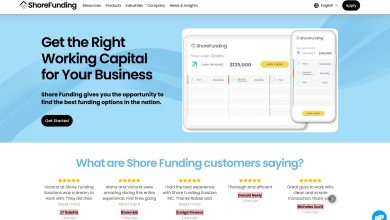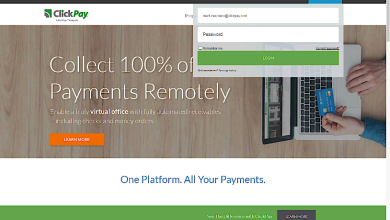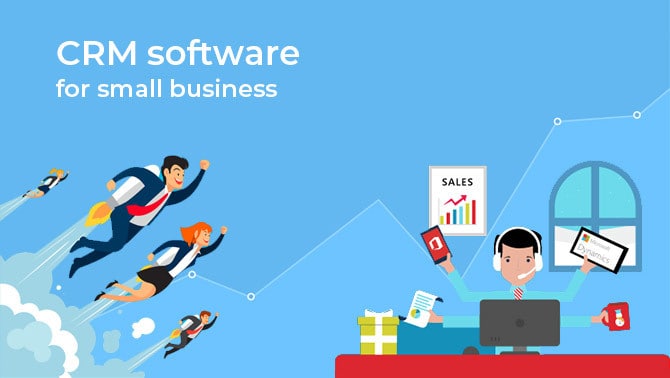
COVID-19 pandemic has affected businesses more than we can ever imagine. According to a study, more than 100,000 small businesses have shut permanently down in the U.S. alone since in March.
Now, marketing is a huge industry but the impact of the Coronavirus pandemic has far-reaching effects. For instance, according to a survey by Gartner, 76% of marketing leaders expect a decrease in their marketing budgets due to the COVID-19 pandemic.
We all know that marketing to businesses is not the same as marketing to individual consumers.
But what most marketers fail to realize is what makes a strong B2B marketing strategy. Today, most professions are experiencing a new way of work.
This transformation is not just changing how B2B buyers think and behave but also making them re-evaluate their readiness to adapt to change fast.
For any marketers looking to stay ahead in the game should know about what that change is. You should understand what it means for your strategy as it is very crucial to survive and thrive in the new landscape.
In this news world, data can provide you a window to enter the world of the new working professional. You will also be able to understand what it takes to weave the findings into your strategy.
So, before diving into the B2B marketing strategy framework, let’s first understand what data-driven marketing is.
What is Data-Driven Marketing?
Data-driven marketing uses data to improve audience targeting, personalize communication, and increase customer engagement.
Data used for marketing comes from several different sources, for example, online browsing activity, surveys, and conversations, or social interactions.
Most of the marketing today is driven by data, but the use of data and which type of data varies greatly across industries. This largely depends on organizational goals and their target audience.
Companies that have a strong data-driven culture usually have a competitive advantage. This is because of several reasons, for instance, it allows them to uncover opportunities to acquire customers faster, and create personalized customer experiences.
Companies that adopt data-driven marketing are more likely to have an advantage over the competition and increase profitability – being more specific, they are six times more likely to be a profitable year on year – Forbes
Hence, having a data-driven marketing strategy is no longer an option – it’s the only option.
How to Get Started with Data-Driven Marketing?
First, clear your goals:
- What data will you collect?
- What tools will you use to collect data?
- How will this impact your current marketing process?
After, you have written down all the answers starting with the data you already have.
But you need to know what you’re working towards to know what to start with. So, setting up goals will help you enormously.
-
Set up Clear Goals
This will help you create a path where you want to go. Otherwise, you’ll end up analyzing all data you have in every possible combination with no results. This will hamstring you in your efforts to find valuable insights.
Having clear goals can help improve the performance of your marketing activities, making it easier to build out a plan of how to achieve it.
Let’s take an example, let’s say you want to generate 10 customers every month through email marketing. Then you need to first start by looking at your open rate. If you have a low open rate then you automatically know that you need to improve your subject lines. From next time, before sending an email campaign, you can A/B-test your subject lines.
-
Search for Solutions
When you know your goals, you also need to evaluate the services you’ll need to achieve your goals.
For example, you need to figure if you need to collect intent data to send out more relevant content in your email campaigns? If yes, then you need to look beyond Google Analytics and towards software like Triggerbee that tracks website activity.
Or, does your sales team need more insight about your website visitors for more efficient prospects? In that case, you need to find a service that can identify companies and track website activity.
To sum it up, your goals should drive your needs which in turn should help you choose a solution that helps you achieve it.
-
Start Small
Sometimes, it is better to start with a new plan than working on the one which has failed.
So, start small with the data you already have. You can make a few small decisions that will put you on track to reaching your goals. If you feel you need more data, you can either purchase it or take time to collect that particular one.
Using data is more of a habit than a skill.
For example, if nobody is clicking on links in your email campaigns, ensure that your subject lines are interesting. Or, nobody is converting on your landing page, ensuring that your message is aligned with your audience.
After you are through these 3 simple steps then you step towards actually planning your B2B marketing strategy.
Shaping Data-Driven B2B Marketing Strategy:
A great B2B marketing strategy comes down to knowing the market size, target audience, mapping the customer’s journey, and delivering the right message. This will all depend on your goals.
But, the key to success is accuracy in your research which is where data takes center stage.
-
Find the Right Data
Find a source that offers you a detailed look into the roles, sectors, demographics, and behaviors of your target audience. This will mean that you’ll know everything about your target audience and even be able to predict their next step.
This can help you greatly with customizing and personalizing your customer’s journey.
But, if you want to take this to the next level, you need to first understand the thought processes behind the actions of your customers.
For this, you need the ability to integrate psychographic data points into your analysis. This will add an extra layer of clarity that demographics and behaviors will not offer you alone.
-
Define Personas
Developing a B2B persona is another crucial aspect of the process. For many businesses, it might appear daunting because of its complexity, but it can be rewarding.
When developing a persona, businesses should focus on:
- Roles: Who are the people in your business who will benefit from your product or service? And, will they decide to purchase, or if they will need to pitch it to a manager?
- Behaviors: How and where do they search for solutions? And, what are their preferred methods of communication?
- Demographics: How old are they? And, which gender they belong to?
- Psychographics: What are the purchase drivers? How do they perceive themselves? What do they value most in the products or services? and What are their reasons for a new purchase?
These questions can guide you in building a persona that is pleasing and can help you in your journey.
-
Seize the Opportunity
B2B marketing means you are targeting professionals. Professionals are already a huge segment of the wider population. B2B target markets tend to be smaller than B2C markets.
So, once you’ve identified your target audience, you can accurately estimate the size of your market. You can then focus your time and efforts on the most lucrative areas.
This will help you get a clear picture which will then help you forecast spend and campaign returns.
-
Optimize your Presence
B2B buyers always have specific expectations. Good insight can help you pinpoint your target sector and see where they look for products and services.
You should focus on your channel strategy across paid campaigns (knowing the lucrative platforms, sites, and formats your audience enjoys) and organic channels (knowing what kinds of information your audience looks for).
Bottom-line:
Building a B2B data-driven marketing strategy might look like a tough task. But, with the right kind of question and data you are well on your way.
B2B marketing strategy in 2020 is not easy but if you want to stay ahead of the competition you need to know all B2B marketing trends.
B2B marketers are always faced with the challenge of clearly seeing who, what and where their audience is. This will limit how far you can effectively reach your audiences.
The right kind of data will give you clarity into the often-murky world of B2B marketing. This will result in more refined campaigns, effective spending, and greater returns.
Author Bio –
By Shreeya Chourasia
Shreeya Chourasia is an experienced B2B marketing/tech content writer, who is diligently committed to growing your online presence. Her writing doesn’t merely direct the audience to take action, rather it explains how to take action for promising outcomes.




